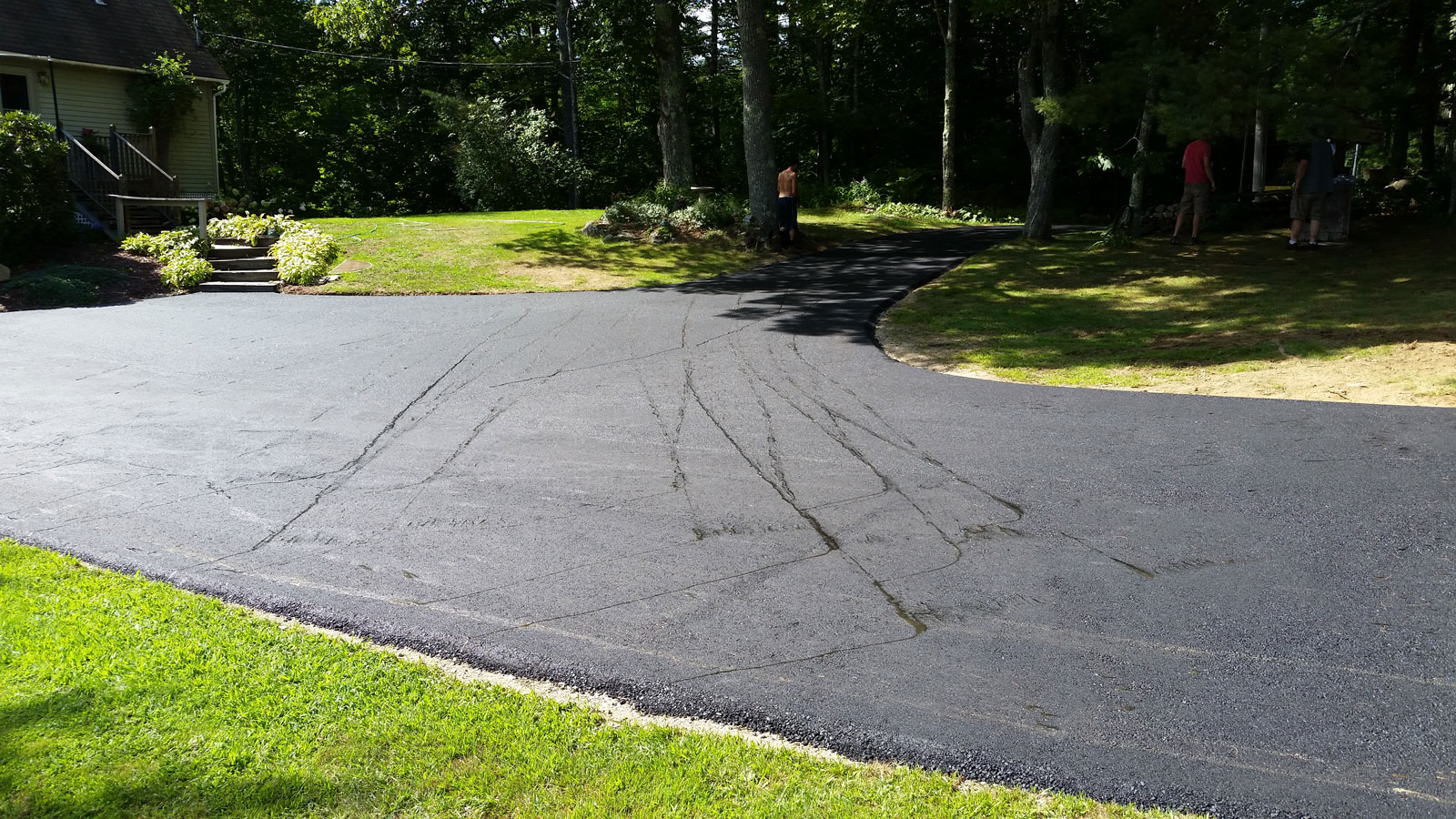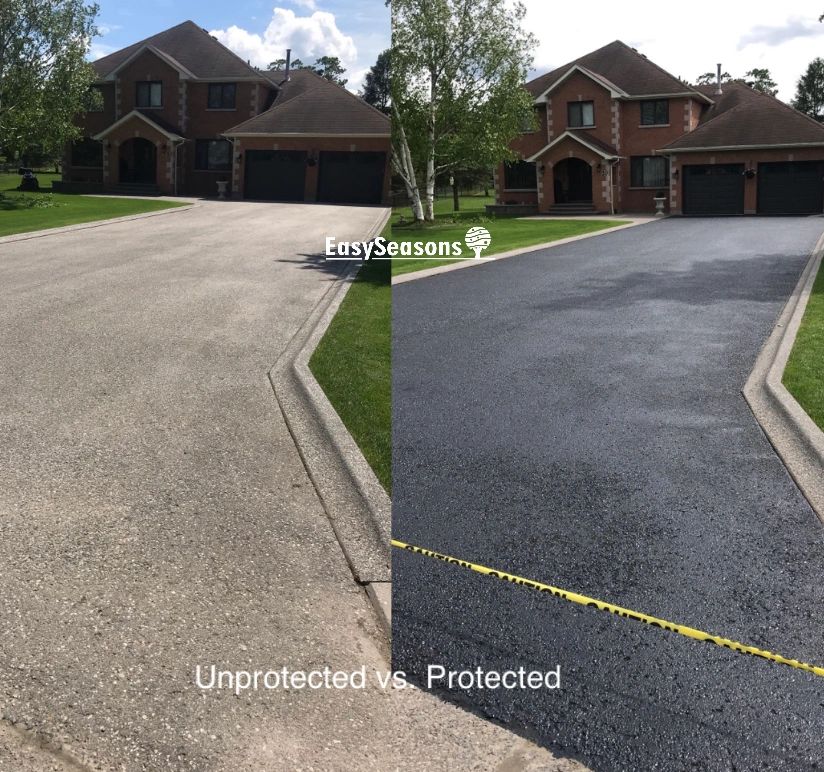Open the Secrets of Asphalt Sealing: Maximizing Warm Mix Asphalt Durability
Open the Secrets of Asphalt Sealing: Maximizing Warm Mix Asphalt Durability
Blog Article

The Ultimate Guide to Setting Up Hot Mix Asphalt
Hot Mix Asphalt installment is an exact procedure that requires attention to information and adherence to particular standards to achieve optimum outcomes. From first site preparation to the last touches, each step plays an essential function in making certain the durability and efficiency of the asphalt pavement. Understanding the complexities of Hot Mix Asphalt installment can result in affordable solutions and long-lasting facilities. Join us as we browse through the necessary actions and upkeep techniques that add to a successful asphalt job.

Recognizing Hot Mix Asphalt
Hot Mix Asphalt, typically understood as asphalt concrete, is a versatile product made use of in roadway construction and maintenance - regrading. It is made by incorporating mineral accumulation like sand, crushed rock, or crushed rock with fluid asphalt, an oil product obtained from crude oil. This combination is heated and after that compacted to produce a resilient and resilient surface for roads, parking great deals, and driveways
One key advantage of Warm Mix Asphalt is its ability to withstand heavy loads and extreme weather conditions. Its flexibility enables it to contract and broaden with transforming temperature levels, minimizing the chance of potholes and splits creating in time. Additionally, Warm Mix Asphalt can be tailored to fulfill certain job demands, such as varying traffic quantities or environmental factors to consider.
Proper setup and upkeep of Warm Mix Asphalt are important to guarantee its long life and efficiency. This consists of ideal site preparation, appropriate mixing and compaction methods, and regular repair work when needed. By recognizing the attributes and benefits of Warm Mix Asphalt, task managers and specialists can make informed decisions to attain effective roadway building and construction jobs.
Site Preparation and Cleaning
To ensure the successful installation of Warm Mix Asphalt, the initial step includes detailed site preparation and clearing up to develop an appropriate foundation for the pavement. Site preparation is vital as it establishes the stage for a long-lasting and resilient asphalt surface. The first job is removing the site of any kind of particles, plant life, or existing sidewalk. This procedure might entail excavation to remove inappropriate materials and make sure appropriate water drainage.
Complying with cleaning, the site should be appropriately rated to develop the desired slope and surface area degree for water drainage. Grading likewise assists in achieving the required thickness and harmony of the asphalt layer. Compaction of the subgrade is after that performed to enhance stability and stop working out with time. It is necessary to compact the subgrade consistently to avoid irregular settling that might lead to cracks in the asphalt later on.
Along with these actions, any kind of energy modifications or setups need to be completed prior to continuing to the following phase of mixing and applying the asphalt. Correct website prep work is basic to the general top quality and longevity of the Hot Mix Asphalt sidewalk.
Combining and Using the Asphalt
Upon conclusion of site preparation and clearing up, the following vital stage in installing Hot Mix Asphalt involves the careful procedure of blending and applying the asphalt mix. find more information The blending of warm mix asphalt is typically carried out at heats to make certain appropriate binding of the products. The asphalt mixture is developed by mixing hot asphalt binder with aggregate products such as sand, crushed rock, or crushed stone. This procedure needs accuracy to accomplish the correct percentages and uniformity for optimal performance.
As soon as the asphalt mixture is prepared, it is transported to the paving site making use of trucks specifically made to keep the mix warm. The application of hot mix asphalt is done utilizing hefty equipment like compactors and pavers. The paver disperses the warm asphalt mixture evenly throughout the ready surface area, while the compactor then compresses the blend to achieve the wanted density and level of smoothness.
Correct mixing and application of hot mix asphalt are important for the toughness and longevity of the paved surface. Careful attention to information throughout this phase makes sure a top quality completed item that can stand up to the rigors of web traffic and the aspects.
Compaction and Finishing Touches
After the hot mix asphalt has actually been uniformly distributed by the paver, the next crucial action is to make sure appropriate compaction and apply ending up touches to the paved surface. Compaction is vital to achieve the preferred sturdiness and durability of the asphalt sidewalk. This procedure involves using a hefty roller to compress the asphalt combination, eliminating air spaces and ensuring a tight bond between the private particles. Proper compaction likewise helps in stopping water infiltration and preserving the structural stability of the sidewalk.
Ending up touches are the last steps required to refine the surface of the asphalt. This might consist of dealing with any type of irregularities, smoothing out harsh areas, and guaranteeing proper drain to stop water buildup. Relying on the job specs, a final layer of sealant or top covering might be put on enhance the look her explanation and shield the asphalt from deterioration.
Attention to information during compaction and finishing touches is vital in accomplishing a high-grade asphalt pavement that will withstand the examination of time.
Upkeep Tips for Long Life
Carrying out an aggressive upkeep plan is necessary for making sure the long-lasting sturdiness and efficiency of warm mix asphalt sidewalks. Regular evaluations of the asphalt surface must be conducted to identify any indications of wear, splitting, or splits. Motivate fixings of these concerns can avoid additional damage and extend the life expectancy of the sidewalk.
One vital element of upkeep is maintaining the surface area clean and cost-free of particles. Regular sweeping and cleansing can protect against the build-up of products that can damage the asphalt with time. Furthermore, proper drainage needs to be maintained to prevent water from pooling on the surface, as standing water can seep right into the asphalt and create degeneration.
Sealcoating is an additional important maintenance job that ought to be performed periodically. This safety layer helps to protect the asphalt from harmful UV rays, water infiltration, and automobile fluids, extending its life expectancy significantly. By complying with these maintenance tips carefully, you can make certain that your hot mix asphalt pavement remains in leading problem for years to come.
Conclusion
Finally, the procedure of mounting Hot Mix Asphalt is essential for developing resilient and durable road surfaces. Correct site prep work, precise blending and application, compaction, and finishing touches are important action in guaranteeing the quality and longevity great post to read of the asphalt pavement. Normal upkeep, including inspections, repairs, cleansing, and sealcoating, is vital to maintaining the honesty of the asphalt and maximizing its performance over time.
Hot Mix Asphalt, generally known as asphalt concrete, is a versatile material used in roadway construction and upkeep.To guarantee the successful setup of Hot Mix Asphalt, the preliminary action involves thorough site preparation and clearing to produce a suitable structure for the sidewalk (hot mix asphalt).Upon completion of website prep work and cleaning, the following vital phase in mounting Hot Mix Asphalt includes the precise process of mixing and applying the asphalt mixture. The mixing of hot mix asphalt is typically brought out at high temperature levels to make certain appropriate binding of the materials. The asphalt blend is developed by blending warm asphalt binder with accumulated materials such as sand, gravel, or smashed stone
Report this page